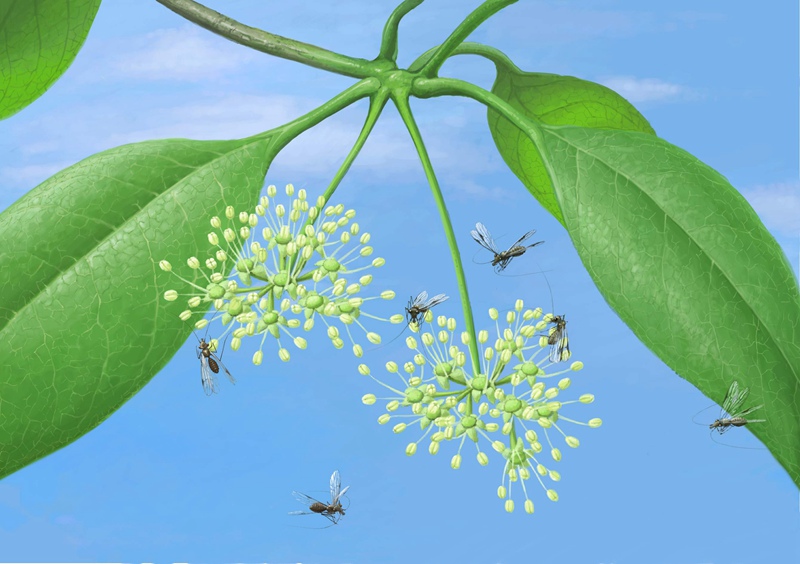Recently, scientists from China, France, Germany, Lebanon and other countries comprehensively studied a peculiar group of small insects from 100 million-year-old Burmese amber. These insects are named Archipsyllidae, a group previously often shown in the Middle Jurassic Daohugou biota, and they can be traced back in more ancient geological time. Compression fossils of Archipsyllidae are usually compared with the modern Psocoptera, although they are not exactly the same. Despite their minute body sizes (about 2 mm long), the exceptional preservation of amber inclusions provides important new morphological details for understanding the morphology and early evolution of these insects.
The study was mainly focused on the complex mouthparts of these insects, which represent an evolutionary link documenting the transition from chewing to piercing mouthparts in relation to suction feeding. Considering other peculiar structures, these “missing link” fossils are attributed to a new order Permopsocida, a group comprising more than 20 extinct species from Permian to Cretaceous. Fossils from the Burmese amber represent the latest occurrences for the order, and they persisted for about 200 million years. The permopsocid mouthparts are highly specialized, which can be inferred from Jurassic forms from Daohugou. Possible lycopod sporangia were found from the gut of a Jurassic form. Interestingly, in the abdomen of an amber fossil thousands of pollen grains were recognized, and they are referred to the angiosperm family Nyssaceae. Their unique mouthparts were well adapted to feed on Nyssaceae pollens (about 10 mm in diameter). Nyssaceae is now still living in Southeast Asia and North America, but Permopsocida have become extinct for a long time. After the emergence of angiosperms, they evolved complex co-evolutionary relationships with insects, resulting in radiation of modern angiosperms many insects. However, direct evidence indicating insect-mediated pollination in the Mesozoic is rare. The study provides an excellent example for understanding the co-evolution between plants and insects.

Holotype of Psocorrhyncha burmitica, preserved in Nanjing Institute of Geology and Palaeontology, Chinese Academy of Sciences.

Life history reconstruction. Specimens depicted as flying or feeding on flowers of Nyssaceae.
Download:
